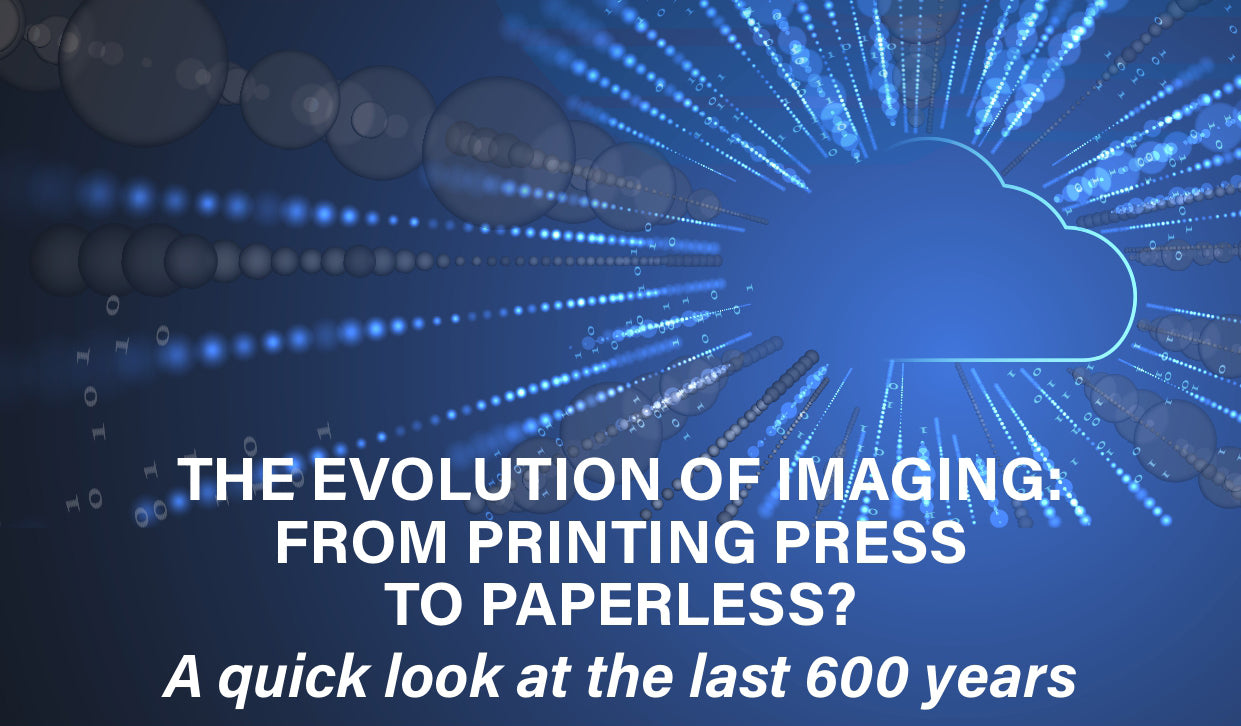You have no items in your shopping cart.
Unique offer no lock in contract Start here.
Scopebi
20
Nov

Few stop to think about the marvel that is modern printing, In a digitised, converged, wireless, cloud-driven society, imaging technology has become so advanced, so complex, so far removed from its origins that the pace of its development in recent decades has well and truly overtaken common knowledge.
Printing is so commonplace, so familiar, that we take it for granted in a similar vein to other modern-day marvels such as electricity and the combustion engine.
Here, we take a brief overview reflecting upon how imaging has evolved over the ages.
The First Renaissance - from the Middle Ages to modernity
Historically, imaging took two highly skilled forms involving labour- intensive, time-consuming methods.Put simply, either a scribe could reproduce text and images by hand, or a block printer could carve templates from wood to ink and stamp copies page by page.
Mass production and dissemination of documents and literature was very slow, and very exclusive.
This all changed with German inventor Johannes Gutenberg's development of the printing press and moveable typeset in the 1440's.
From this point text and imagery could be in mass produced, far more efficiently and far less costly.
So profound was this invention that, in essence, the imaging process itself did not change for almost five centuries...
The xerograph Evolution
Although it was invented in 1938, the xerograph did not become available until the 1960's.
Derived linguistically from the Greek words 'xero' (dry) and 'graph' (writing), xerography was in fact a process of 'dry writing,' where dry ink or toner is electro-chemically transferred to a drum which is then rolled over paper to create an image.

Credited to American inventor Chester Carlson, xerography is still widely used today in most photocopiers and in newer technologies in laser and kED imaging.
Alongside the rise and growth of xerography, Hewlett-Packard, Epson, and Canon were all developing Inkjet technology from the 1950's until its refinement and emergence in the consumer market in the 1980's.
Essentially, Inkjet imaging involves a printhead with several minute nozzles - or inkjets - which spray droplets of ink onto the print medium to form text and images.
While xerography had more in common with traditional printing methods in image transfer, Inkjet presented a more modern, more computer driven process.
The Digital Revolution ... the Second Renaissance?
From the 1990's onward we have witnessed radical changes in consumer and business technology, brought about firstly by digitisation itself, and the digital convergence that has followed.
While we are all familiar with digitisation of such devices as telephones, cameras and music players - and indeed of processes such as word processing and mail - most are not all that familiar with the concept of digital convergence.
Perhaps the most common example of this is the modern smartphone; a device that sees a combination or 'convergence' of the telephone, camera and music player with basic computing technology in web browsing and email, in a fully mobile wireless unit so small it can fit in a pocket.
Exactly the same phenomenon has occurred with imaging technology with the advent of so called 'All -in- one' machines.
Here, we have seen several technologies converge into the modern scanner/copier Multi-Function Printers common to every office.
Photocopying, scanning, printing, faxing, and emailing of documents can all be done simply and efficiently in a single unit.
And with Wi-Fi and Bluetooth, a multitude of modern devices can instantly link and transfer documents simultaneously, without any need for paper.
One has to wonder what Gutenberg would think of such a unit!
Into the future ...
Today imaging technology has become so simple to use, but increasingly harder to manage.
As new considerations enter the fray - from cloud technology and cybersecurity, to complexities in setup and maintenance - it often makes sense to consider a managed print solution.
Under this type of arrangement, not only is a suitable unit delivered and installed, but all associated costs - parts, service, maintenance, support and consumables - are tailored into a fixed monthly plan.
With this solution, each client can access the most up-to-date technologies available while mitigating large initial purchase outlays, depreciating asset costs and technological obsolescence - not to mention the associated headaches and frustrations trying to handle maintenance and troubleshooting themselves!
Just as each era of the imaging evolution has increased efficiency and accessibility, building upon technologies and honing skills developed from previous generations, a managed print solution presents a new way into the future.




← Older Post Newer Post →